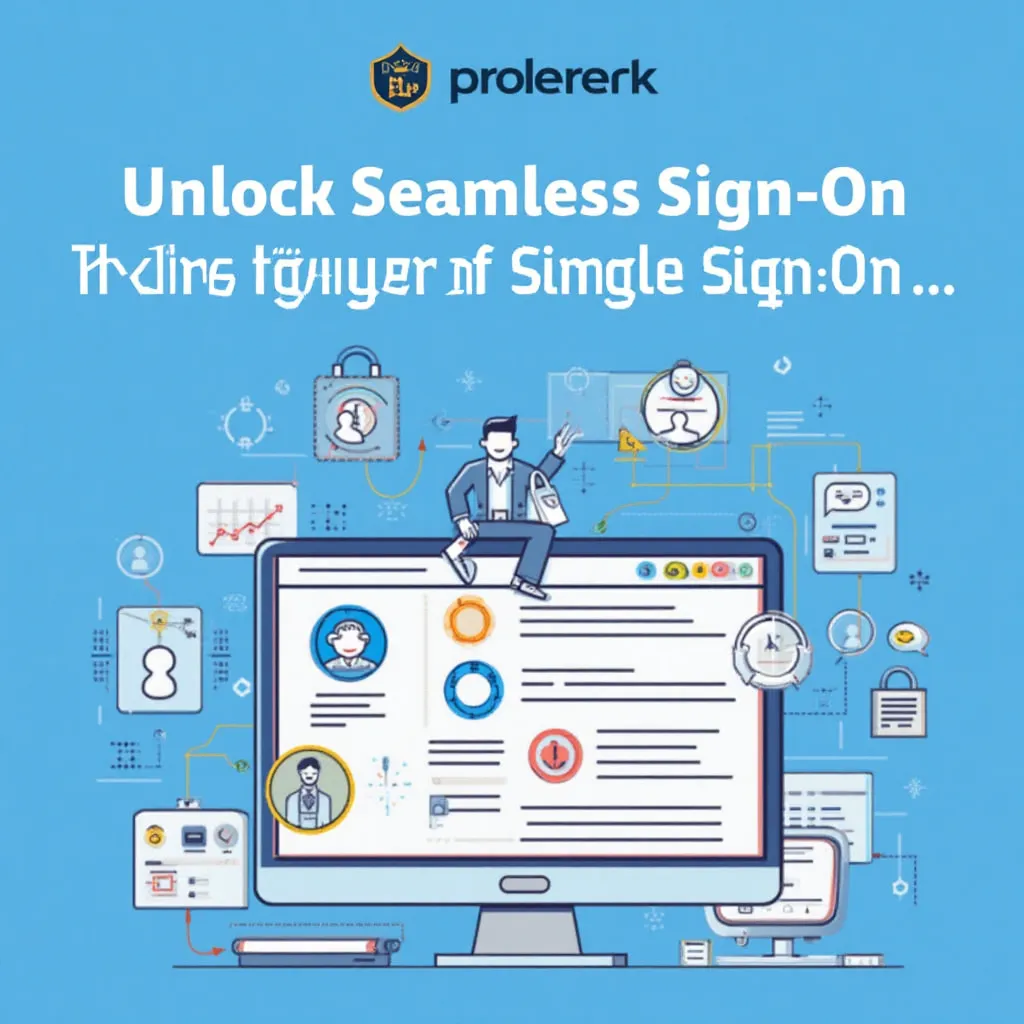The Power of Single Sign-On: Simplifying Digital Security
In today’s digital landscape, concerns about data privacy and security have reached an all-time high. A staggering 72% of Americans worry about identity theft and fraud, while 64% are concerned about stolen passwords, according to a 2019 Statista survey. As a result, strong and secure user identification has become a top priority. Single Sign-On (SSO) has emerged as a solution to this challenge, offering a simplified login process and an extra layer of security.
What is Single Sign-On (SSO)?
SSO is a straightforward authentication method that allows users to access multiple online services using just one set of credentials. Instead of creating and remembering separate logins for each product or service, SSO streamlines the process by allowing users to use a unique combination of credentials to access various applications seamlessly.
How SSO Works
Imagine having a master key that opens all the doors of a hundred-bedroom hotel building. Traditionally, you would need a unique key to open each room, but with SSO, you can unlock and enter any room without the burden of carrying multiple keys. When a user attempts to log in to an application integrated with SSO, they are redirected to the identity provider for validation. The third-party provider verifies the user’s credentials and returns a token to the application, confirming or denying access based on the information within the token.
Popular SSO Authentication Methods
There are three popular SSO authentication methods: SAML, OAuth, and OpenID Connect. Let’s break them down:
- SAML: Imagine checking in at a conference center, where security asks the Identity Provider (IdP) for authentication data and sends it to the Service Provider (SP). The SP acts as a gatekeeper, ensuring you are who you claim to be by asking the Identity Provider.
- OAuth: Picture using a gym membership app provided by your company that the gym trusts. OAuth gives you access without revealing your real credentials. When you grant access to a third-party application, you authorize the application to access specific data on your behalf.
- OpenID Connect: Imagine having a magical key that unlocks multiple doors, each leading to a different experience tailored just for you. OpenID Connect is a user-friendly extension of OAuth for Single Sign-On (SSO), allowing you to gain access to different applications while receiving information about yourself from a trusted source.
Login Methods and SSO
SSO can be implemented as a standalone verification technology or integrated with a login method to smoothen the process and increase security. The most compatible methods combined with SSO technologies include:
- Username and password: The most mainstream authentication method, where users need to log in to the SSO only once, and the SSO handles the authentication for all applications.
- Social media login: Users can use their social media credentials as their SSO credentials, allowing them to access multiple applications without creating a new set for each platform.
- Two-factor authentication (2FA) or multi-factor authentication (MFA): Combining SSO with 2FA or MFA adds an extra layer of security, where users need to identify with their SSO credentials and then complete a second validation with their preferred method.
- Passwordless authentication: Users can gain access to an application with a passwordless method, such as a one-time password or a push notification, where the SSO is used as a key to request the code or the push notification.
3 Benefits of SSO
- One login: Having to remember multiple credentials for each application is a burden for users. SSO simplifies the process, saving time and reducing frustration.
- Security: SSO combined with an extra layer of security, such as 2FA or MFA, provides a strong powerhouse to secure all digital accounts.
- Onboarding and offboarding: SSO simplifies the onboarding process for new employees, allowing them to access all necessary applications with a single set of credentials. Similarly, when an employee leaves the organization, access to all services can be revoked with one single login.
Classic SSO UX Login Flow
Here’s how SSO works step-by-step:
- User navigates to application: The user opens the application with a website and its web browser or a mobile application.
- Click on login and redirect to SSO identity provider: The application detects the user is unauthenticated and redirects them to the SSO identity provider.
- Choose login method: The user is presented with various login options to authenticate, such as entering a username and password or choosing an SSO method.
- User completes multi-factor authentication (optional): If two-factor authentication is enabled, the user needs to verify their identity by entering a secondary piece of validation.
- Application validates credentials: The identity provider used by the application validates the credentials through its own system or with a third-party provider.
- Token generation: After approving or rejecting the credentials provided by the user, the provider generates an authentication token containing the key to give access to the application.
- Redirection to the application: The SSO provider redirects the user back to the original application, passing the authentication token as a parameter in the URL.
- Token validation: The application gets the token and validates it for security and accuracy.
- Access to the application: The user gains access to the application, and the status changes to logged in.
- Session management: While the user is logged in, the application may use token refresh any time to extend the user’s authentication without needing to repeat the login process.
The Future of Digital Security
Single Sign-On has become a valuable ally in addressing security concerns, streamlining the login process, and enhancing the overall user experience. By combining SSO with 2FA, social logins, or passwordless options, companies can provide a strong powerhouse to secure all digital accounts. As users continue to prioritize convenience and security, SSO is poised to play a crucial role in shaping the future of digital security.
